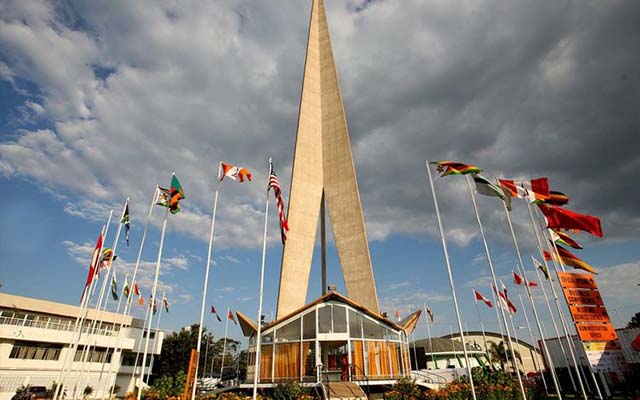Pitfalls of hydropower at a time of climate change

Zimbabwe’s main hydropower dam, Kariba, is running out of water due to the current drought. The dam is only 41 percent full, according to the Zambezi River Authority, which oversees the dam. This time last year, Kariba was 48 percent full.
Now, the implications for a drying up Kariba on Zimbabwe’s electricity sector are too ghastly to contemplate. During 2015-2016, as a drought triggered by El Nino hit hydro-power production at Kariba, internal electricity generation fell sharply, resulting in rolling power cuts that left households in the dark for up to 18 hours a day.
At the time, water capacity at Kariba fell to as low as 33 percent. Today, the Kariba hydro electric power plant accounts for 67 percent of Zimbabwe’s electricity supply. But it is evident that as the year wears on, and the water levels in the dam drop due to a lack of rain and evaporation, electricity generation will also drop.
The threat of excessive power cuts in 2019 look very real.
The intensity of the existing and impending energy crisis demonstrate not only the threat climate change poses on future financial investments into hydro power, but also that hydro can no longer be relied upon to make Zimbabwe energy secure. With power shortages, electricity prices will also likely go up.
At a time, the country is seeking to boost power generation, the option to invest into hydro-power provides little guarantee for reliable power supplies now and in the future. And in a vicious ecological cycle, the rising domestic and global climate risks will only exacerbate the water shortages at Kariba.
Zesa has issued no warning of potential increased power cuts later in the year — perhaps only yet — as a result of water-induced low generation capacity at Kariba. But the risk remains real all the same. Meteorologists have spoken unkindly about the current rainy season, which has been mostly without adequate rain.
Targeting to increase the share of renewable energies in the national energy mix to 10 percent by 2020, Zimbabwe is going to need an integrated suite of energy alternatives combining thermal, hydro and solar, complemented by cleaner energies like biogas and others.
According to the National Energy Policy, Zimbabwe had been targeting a combined 1 500MW of hydro power from the expansion of Kariba by 2016 (obviously not met, even though 300MW was added to the dam recently) and a new plant at the Batoka Gorge four years later, funds permitting.
There are plans also to build hydro stations within inland dams and rivers at Pungwe providing a cumulative 24MW in two phases, Tokwe-Mukosi 12MW, Gairezi 30MW and Kondo 100MW. These projects face climate threats similar to those that have seen Kariba teeter on the brink of closure in 2015.
Due to climate change, water in dams like Kariba, rivers, lakes and streams is expected to decline by as much as 50 percent by 2050, according to a 2012 World Bank report, “Turn Down The Heat.” Just how much security can be drawn from large-scale hydro energy investments remains a matter of conjecture.
Investments into hydro energy will now need to be carefully weighted against the anticipated future changes in the climate, changes that will undoubtedly impact water availability.
The scales are rapidly tipping against countries building their energy future on hydro power just so they meet their emission reduction quotas under global climate agreements.
It goes without saying that hydro power faces significant competition for water from thirsty economic sectors such as agriculture and manufacturing. And we have yet to factor in ballooning household water needs. Clearly, the scale of potential future demand for a receding resource like water weighs heavy on hydro power.
If that is not enough, existing and future large hydro power plants built along the Zambezi River Basin, such as Kariba and Batoka, are ill-prepared for climate change, a 2012 report from International Rivers, a global ecological NGO revealed.
Hydro power projects around the Zambezi are poorly evaluated for the risks from natural hydrological variability, which is very high in that area, much less the risks posed by climate change, the report says.
Further, the Zambezi Basin exhibits the worst potential effects of climate change among 11 major sub-Saharan African river basins, and will experience the most substantial reduction in rainfall and run-off, according to the UN climate science panel.
Warming in this basin will be significant, estimated in the region 0,3-0,6 degrees Celsius within this century while evaporation rates are expected to be higher.
In the context of clean energy development, hydro power presents practical options for neutralising greenhouse gas emissions, which Zimbabwe aims to cut by 33 percent by 2030, but the risks arising from climate change cannot be ignored.
God is faithful.










Comments